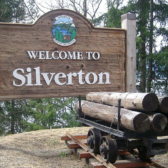Recovering Grizzly Populations are not a Threat to Humans
Editor, The Nelson Daily
Wildsight has been engaged with grizzly bear population surveys as well as efforts to assure healthy grizzly bear populations in the region for several decades.
While it is true that grizzly bear numbers are recovering in this region, it is a simplistic misrepresentation to suggest that recovery is complete and that a hunt is necessary to avoid grizzly encounters with humans. These conclusions are not supported by either detailed grizzly population data or the science of human bear-conflict.
Population numbers can easily give the false impression of an overabundance of bears roaming the region. While approximately 900 grizzly bears do inhabit the Purcells and Rockies between the US border and Golden, these are sometimes broken into small isolated populations — particularly in the southern Purcells. Isolated populations are threatened with extinction.
Fragmentation of populations remains a significant issue and there remains a dire need to create and maintain connectivity corridors with adjoining bear populations.
The suggestion that hunting is necessary to protect people from grizzlies is misinformed and counter to all research on human-bear incidents. It has been consistently demonstrated that guns and the attempted use of lethal force lead to increased injuries of both humans and bears — and are far less effective than bear spray. A recent Human-Bear Conflict Conference in Missoula — featuring leading researchers from across North America concluded that hunting does not reduce human-bear conflict.
Most encounters arise when people come in proximity to bear food sources. Bear sightings have steadily increased in the valley since the return of kokanee to our river systems, but the vast majority of bears are neither encountered nor seen by residents, particularly if people practice bear smart management of waste and fruit trees.
The incident of watching a bear consume a horse carcass is the result of poor livestock disposal, and it creates a risk to anyone unaware of the feeding sight.
Gut piles left by hunters also lead to human-bear interactions. Bears do their best to avoid humans, unless it becomes a choice between food and confronting people. It is everyone’s responsibility to avoid bear habituation to human food sources. Increased sightings in urban areas are often associated with the failure of berry crops, and only a bear aware community will reduce conflicts.
The majority of recorded grizzly mortality is not from hunting, but hunting does unnecessarily increase mortalities. Currently, collisions with trains and highway vehicles represent significant causes of grizzly bear mortality. Human-bear interactions arising from poor management of waste and fruit trees also contribute.
Wildsight’s vision for healthy wildlife populations calls for select wildlife sanctuary areas in the Rocky and Purcell Mountains, combined with habitat protection and corridor management.
Grizzly bears remain threatened despite healthy populations in some areas of the East Kootenay.
There is much work to be done to maintain connectivity. Wildsight focuses efforts on maintaining critical habitat and recovery corridors, particularly across Highway 3 in the Purcells and the Rockies.
Hunting will not make people safer. There is no evidence to suggest that opening the hunt will address problem bears wandering near human habitation.
We all need to become bear smart and take action on how we influence wildlife behavior.
John Bergenske, Executive Director, Wildsight


























